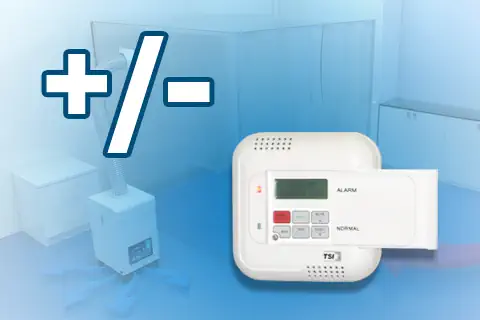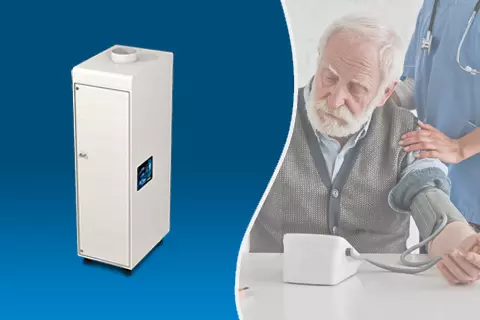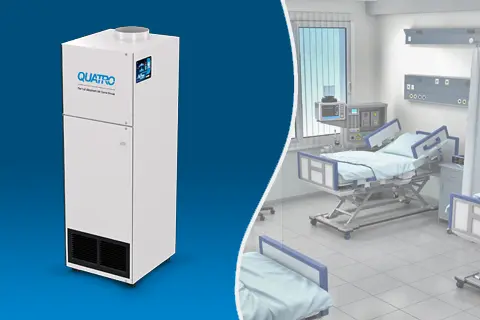Positive / Negative Pressure and Indoor Air Quality
Overview
 Since the COVID pandemic in 2020, organizations in both the public and private sector have implemented a number of engineered controls to prevent the spread of infectious disease. Hospitals and long-term care facilities in particular, have made capturing airborne pathogens a priority to reduce infections for high-risk patients.
Since the COVID pandemic in 2020, organizations in both the public and private sector have implemented a number of engineered controls to prevent the spread of infectious disease. Hospitals and long-term care facilities in particular, have made capturing airborne pathogens a priority to reduce infections for high-risk patients.
Respiratory viruses such as COVID and the flu can travel throughout a building quickly, infecting large numbers of people. A cough or sneeze has the ability to propel disease as much as 200 feet and remain airborne long enough to reach ceiling ventilation units, risking the health of patients and staff.
Implementing negative and positive pressure rooms can be an effective way to contain deadly pathogens and reduce infections.
How Positive / Negative Pressure Rooms Work
Negative pressure rooms use a high quality HEPA air purifier to create lower air pressure inside a room. As a result, harmful particles remain trapped, unable to escape. Negative pressure offers a practical way to isolate people with infectious diseases and protect others outside the room from exposure.
Conversely, positive pressure rooms use higher pressure inside the room to help push air out and prevent it from circulating back in. Airborne germs and particulates are filtered out and air remains purified inside the room. Positive pressure rooms are generally used to protect patients vulnerable to infectious disease such as those with compromised immune systems.
Solutions for Positive / Negative Pressure

AF 1000-IF
HEPA Air Purifier
Ducted / Negative Pressure. Advanced filtration for eliminating bacteria, viruses, fungal spores and odors. 600 nominal CFM.
Get Product Details
AF 2000-IF
HEPA Air Purifier
Designed to handle high concentrations of chemicals, gases, odors, particles and biological contaminants. 1000 nominal CFM.
Get Product Details